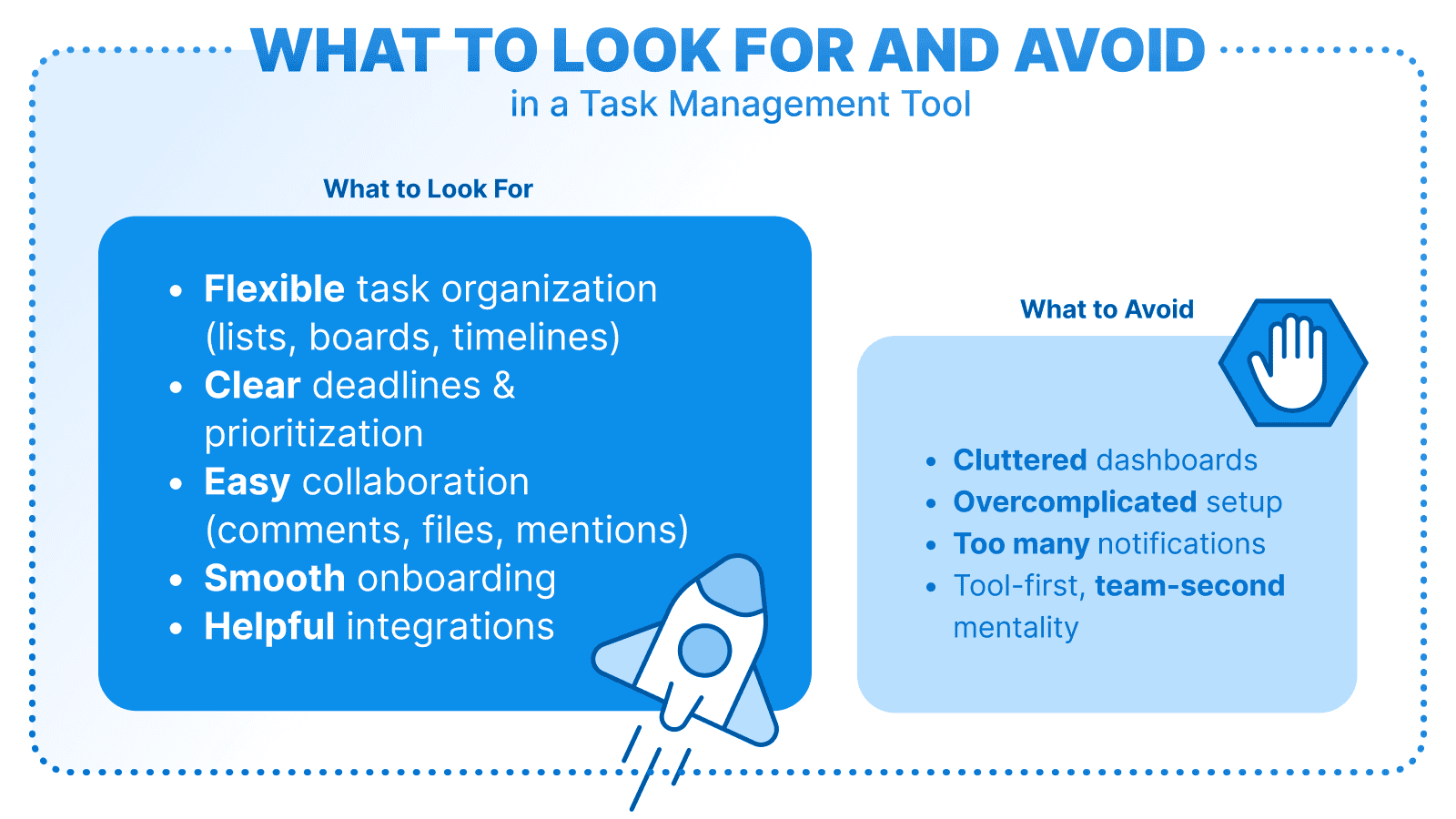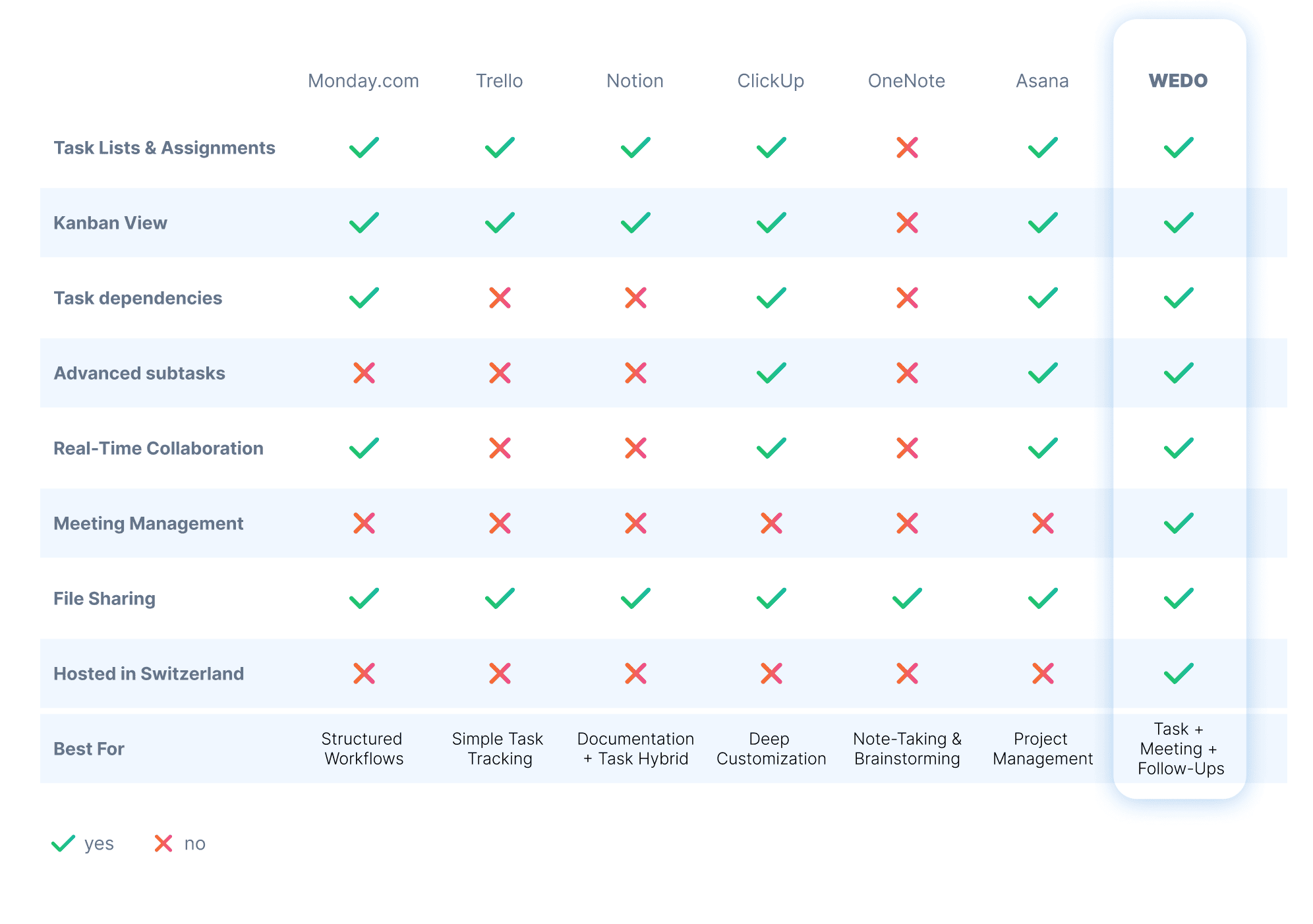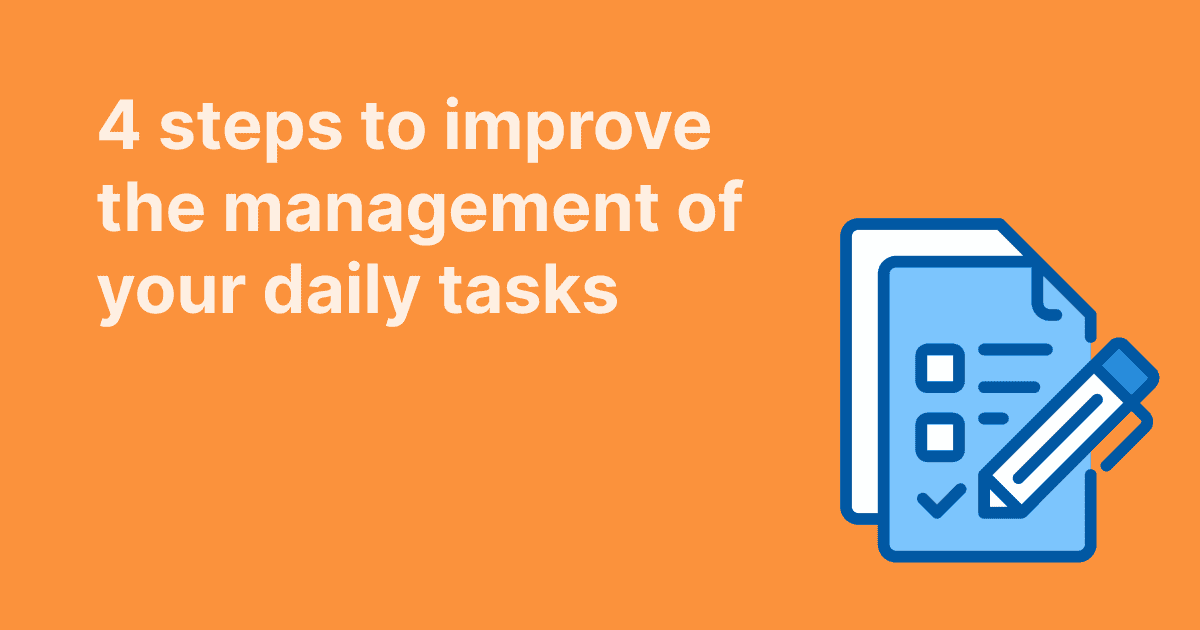Every team needs structure. Without it, tasks slip through the cracks, priorities get lost, and productivity takes a hit. A great task management tool solves this by keeping everyone aligned, making it easy to organize work, set deadlines, and track progress.
But not every tool is a good fit for every company. Choose the one that doesn’t align with your business, and instead of streamlining work, it becomes another obstacle; forcing your team to adapt to its rigid structure, adding unnecessary complexity, or bombarding everyone with notifications that create more noise than value.
But with so many options available, how do you pick one that actually makes work easier? The answer isn’t in feature lists or brand names. It’s in how well a tool fits your team’s workflow.
This guide walks you through the key factors to consider, common pitfalls to avoid, and a practical approach to testing tools before committing. By the end, you’ll have the confidence to choose a task management solution that works for your team, not against it.
Start with Your Team’s Workflow, Not the Software’s Features
It’s easy to get caught up in flashy features when comparing task management tools. Gantt charts, kanban boards, automation—these all sound useful, but they won’t help if they don’t align with how your team actually works.
Instead of starting with a tool’s feature list, start with your team’s workflow.
A task management tool should adapt to your processes, not force your team to change how they work just to fit its structure. Before jumping into comparisons, take a step back and assess your team’s needs:
- Project complexity – Do you need a simple to-do list for individual tasks, or a full-fledged project management system with dependencies and milestones? Collaboration style – Does your team work in real time, asynchronously, or a mix of both?
- Task visibility – Do team members manage their own tasks independently, or is shared visibility across projects essential? - Integration needs – Is it really essential for the tool to sync with your email, calendar, or document storage? - Scalability – Will the tool still be useful as your team grows, or will you outgrow it quickly? - User preferences – Does your team prefer structured task management (lists, priorities, deadlines) or a more flexible system (boards, labels, workflows)? - Compliance & security – If your industry has strict data security or compliance requirements, does the tool meet those standards?
By answering these questions, you can filter out tools that don’t support your team’s workflow. This way, you’ll avoid getting lost in the feature lists and instead focus on choosing a tool that actually helps your team get work done.
What a Task Management Tool Needs to Do Well
A good task management tool should feel like an extra team member, one that organizes work, keeps priorities clear, and makes collaboration seamless. A bad one? It’s just another thing to manage.
Too many teams fall into the trap of picking a tool that looks powerful on the surface but ends up slowing them down. Clunky dashboards, endless customization options, and a flood of notifications can turn a well-intentioned solution into a daily frustration.
So, what actually makes a task management tool useful?

✔ Simple, flexible task organization – Whether your team prefers lists, kanban boards, or timelines, the tool should adapt to different workflows, not lock you into a rigid structure.
✔ Clear deadlines and priorities – Tasks shouldn’t pile up unnoticed. That means making it easy to set deadlines, assign priorities, and prevent tasks from piling up unnoticed. Milestones are especially useful here, helping teams track progress on larger goals by grouping related tasks. Some tools also support prioritization frameworks like the Eisenhower Matrix, which can help teams focus on what’s urgent versus what’s important.
✔ Collaboration without extra effort – Comments, mentions, and file sharing should streamline discussions, not create more side conversations outside the tool. The goal is to keep work and communication in one place.
✔ Smooth onboarding – A task management tool should simplify work, not create more of it. If it takes weeks to learn, adoption will be an uphill battle. A great tool is intuitive enough for teams to start using right away, with minimal setup or training. To help teams hit the ground running, WEDO offers set-up meetings for new customers, ensuring networks are properly configured from day one.
✔ Reliable integrations – A tool should work with your existing workflow, not against it. Seamless integration with email, calendars, and other apps reduces friction and keeps everything in sync. While WEDO is actively expanding its integration capabilities—including upcoming connectivity with Teams and bi-directional calendar syncing—it's important to evaluate what your team needs now and what’s on the horizon.
Where teams often go wrong:
🚫 Overloaded dashboards – Just because a dashboard looks impressive doesn’t mean it’s useful. Too much information at once can slow down decision-making. 🚫 Too many customization options – If a tool requires configuring everything from scratch, it can create more work than it saves. While flexibility is great, teams need structured simplicity to get started quickly. 🚫 Alerts and notifications that create more noise than value – Constant pings and reminders can be distracting. A great tool provides smart notifications, just enough to keep things moving, without overwhelming your team.
Mistakes That Lead to the Wrong Choice
Even with the best intentions, teams sometimes end up choosing a task management tool that doesn’t actually work for them. Maybe it’s too complicated, too rigid, or just doesn’t get used at all. Avoiding these common pitfalls can save your team from frustration and from having to switch tools again in a few months.
Ignoring user adoption – If your team doesn’t use the tool, it doesn’t matter how many features it has. A flashy dashboard or an extensive settings menu won’t help if people avoid using the tool altogether. The best solution is one that fits into daily workflows with minimal resistance.
Underestimating the learning curve – A tool should simplify work, not require hours of training just to complete basic tasks. If the interface is overwhelming or requires constant troubleshooting, adoption will suffer.
Choosing based on brand recognition – Just because a tool is popular doesn’t mean it’s the right fit. Many teams default to well-known names without considering whether the tool actually matches their workflow. A good fit is more important than a big name.
Overlooking long-term costs – Some tools start off cheap (or even free) but require expensive add-ons, premium features, or per-user pricing that can quickly add up. A tool that looks affordable at first glance might become a financial burden as your team grows.
Focusing on the tool, not the problem – It’s easy to get caught up in feature comparisons and software demos, but the real question is: What problem are you trying to solve? If you don’t define your needs upfront, you’ll end up chasing features instead of solutions.
How to Compare and Test Tools Effectively
A task management system might look great on paper, but will it work for your team or will it be a waste of money? Find out by going beyond marketing claims and putting tools through hands-on testing.
Here’s how to make that process count: Book demos and ask the right questions – Most vendors offer demos of their task management software tools, but don’t just sit through a sales pitch. Bring real scenarios from your team’s workflow and ask how the tool handles them. Can it quickly track task progress, manage assigned tasks, and support real-time collaboration?
Get the right people involved – A tool shouldn’t just be chosen by leadership or IT. Include team members who will use it daily, from project leads to individual contributors. They’ll have valuable insights on whether the tool actually simplifies tasks or just adds another layer of work.
Test with a real project – Set up a small but meaningful project during the trial. Create task lists, assign work, and track completion. Does the tool help the team stay organized, or do they find themselves defaulting to email, sticky notes, or spreadsheets instead?
Compare usability across different roles – A good task management app should work for different workflows. Does it make sense for both managers tracking progress and team members handling daily tasks? Can it adapt to both structured kanban boards and flexible lists?
Assess long-term fit – A tool that works well for a small business today should also scale as the team grows. Check if it allows custom workflows, integrates with project management software, and offers features your team needs to prioritise tasks.
Evaluate customer support – Even the best tools come with a learning curve. Does the vendor offer onboarding, training, or customer support that helps teams get up to speed quickly?
A good tool shouldn’t feel like something you have to fight with. Taking the time to test tools properly will help you avoid frustration (and costly mistakes) down the road.
Comparing the Most Popular Task Management Tools
Now that you have a clear idea of what to look for in a task management system, let’s see how the most popular tools stack up. Some platforms shine when it comes to staying organized and tracking task progress, while others focus on real-time collaboration or offer deep customization for complex workflows. Below, we compare some of the leading task management software tools, breaking down their strengths, potential drawbacks, and how they support effective task management.

Choosing with Confidence
While all the tools in this comparison help teams stay organized and manage assigned tasks, the right choice comes down to how your team actually works. Some platforms excel at simple task tracking, while others offer deep customization or structured project management, but the best task management system is the one that simplifies work instead of adding complexity.
Whether you're running a small business, managing a fast-growing team, or coordinating large-scale projects, picking a tool that fits your workflow will help your team complete tasks efficiently, not waste time wrestling with software.
Need a tool that connects tasks, meetings, and follow-ups without the chaos? Try WEDO for free today and see how it makes teamwork effortless.



